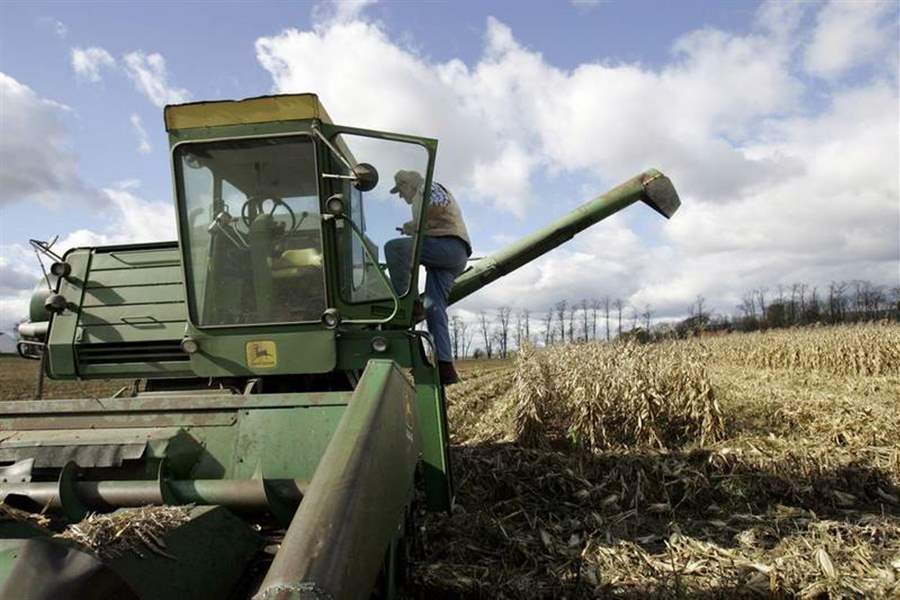
Corn planting expected to decrease
4/1/2008
If Ag Department forecasts prove accurate, corn harvests like this one in Pennsylvania could be less common in the fall.

If Ag Department forecasts prove accurate, corn harvests like this one in Pennsylvania could be less common in the fall.
WASHINGTON - Farmers are expected to plant less corn this year, which could mean continuing higher costs for consumers at the grocery store.
More soybean and wheat are expected to be planted in response to record prices.
Those forecasts were released yesterday by the U.S. Department of Agriculture.
"Coming off a year of massive migration to corn, growers don't want to go three years in row," said Jim Gerlach, president of AC Trading Co. in Fowler, Ind. "Farmers get a nice benefit from rotating corn and soybeans in the Midwest."
Corn prices have skyrocketed in recent years, helped by the burgeoning ethanol industry, which turns the crop into fuel, and rising worldwide demand for food. The higher prices have hurt poultry, beef and pork companies, who feed corn to their animals.
The Ag Department predicted that farmers will plant 86 million acres of corn this year, down 8 percent from 2007, when the amount of corn planted was the highest since World War II.
The decreased supply could drive corn prices even higher - a cost for food producers that could be passed on to consumers.
Soybean planting is expected to be up 18 percent, at almost 75 million acres. The largest increases in soybean planting are expected in Iowa and Nebraska.

Soybean planting is expected to rise, along with wheat.
Soybeans produce their own nitrogen fertilizer, making them less expensive to grow than corn.
The U.S. will be the largest producer and exporter of corn and soybeans in the marketing year that ends Aug. 31, the department said on March 11. The forecasts were based on a survey of 86,000 farmers who were asked in the first two weeks of March about their spring planting intentions.
The department also predicted yesterday that spring-wheat planting will jump 7.8 percent from last year to 14.3 million acres. The price of the grain more than doubled on exchanges in Chicago, Minneapolis and Kansas City, Mo.
Gregg Doud, an economist for the National Cattlemen's Beef Association, said consumers should brace for severe price increases for eggs and more costly dairy products and for poultry, pork, and beef.
And Scott Faber, vice president of the Grocery Manufacturers Association, said a drop in corn production combined with federal mandates backing ethanol production will result in "massive increases" in food prices.
But a decrease in corn production could the ethanol industry also. Higher prices for the crop could be passed on to those filling their cars up with the renewable fuel.
The number of ethanol plants has increased from 50 in 1999 to 134 now with more being built, according to the Renewable Fuels Association. An average, 100 million gallon-per-year ethanol plant consumes about 33 million bushels of corn.
Terry Francl, a senior economist for the American Farm Bureau Federation, predicted yesterday that corn prices will continue to rise - possibly to $6 a bushel, around three times the price in 2005 - but said consumers shouldn't panic just yet.
He said many farmers will take a look at the report and decide to plant corn instead of other crops. In addition, he said, and weather conditions could change farmers' plans.
"We're going to have to wait until we go through the spring planting season," he said.